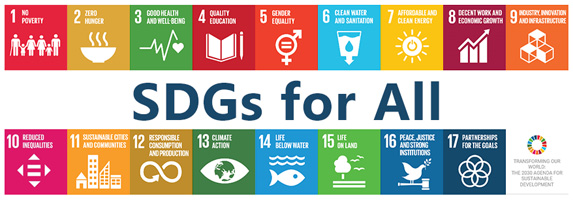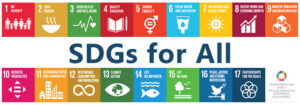By Fabíola Ortiz
BONN (IDN) – Forest degradation and biodiversity loss carry a very heavy price for climate and people’s livelihoods. Restoring forests matters when it comes to growing resilience to climate variation and securing a healthy environment for future generations. This was the main message delivered by experts and community leaders who met in Bonn (December 19-20, 2017) to discuss a more sustainable path to conservation.
“We should stop seeing indigenous peoples, natural resources and forests as a problem. We could see them as a solution,” said Robert Nasi, director general of the Centre for International Forestry Research (CIFOR) which hosted the Global Landscapes Forum, a large science-based platform on sustainable land use. CHINESE | ITALIAN | JAPANESE | SPANISH
One month after world leaders held negotiations at the UN Climate Change Conference (COP23), policy makers, experts, private sector representatives, scientists, and civil society returned to Bonn to discuss cutting-edge research and innovative projects across Africa, Asia, Latin America and the Pacific in an attempt to see landscapes in a holistic way.
“Landscape management is not optional, it is an urgency,” argued Nasi, highlighting the need to promote transformation through knowledge and change “how we understand landscapes” to better provide science-based evidence to foster achievement of the Sustainable Development Goals (SDGs).
Erik Solheim, executive director of the UN Environment Programme (UNEP), suggested that one-third of what global society can do for the climate can be achieved through landscapes policies by protecting biodiversity.
“2017 was the year we saw mother Earth hit back,” he noted. “Hurricane Irma hit with enormous intensity the Caribbean, at the same time we saw floods in India and Bangladesh, landslides in Sierra Leone, droughts in Somalia and a number of negative climate and environmental events.”
“However, we have shown we are also able to change if we really want to,” said Solheim, pointing to the launching of the UK-Canada anti-coal alliance; Chinese president Xi Jinping who had more than ever talked about environment during the Communist Party congress; and India which had increased solar and wind in its energy mix.
“We also need to bring private sector. We have to translate this big momentum to the financial resources”, he urged.
Forest degradation and land use change contribute significantly to greenhouse gas emissions (GHG) and “the situation is deteriorating rapidly,” warned Karin Kemper, director for the Environment and Natural Resources Global Practice at the World Bank.
Around 24 billion tons of fertile soil erode every year, and 12 million hectares of land are degraded annually. “We can see economic gains from halting forest loss and restoring degraded lands. Sustainable forest products have the potential to create millions of rural jobs and drive green growth,” stressed Kemper.
The global effort of restoring 350 million hectares by 2030 in the Bonn Challenge will sequester an amount of 15 gigatons of CO2 translating into 107 billion dollars in economic gains.
“It is a gloomy picture, but there is some reason for hope,” said Kemper. “There is a new forest economy emerging with a better understanding of the economic value of services from forests such as water supply.”
A continent that has the least contributed to GHG emissions has been one of the most impacted by climate extreme events. “Addressing landscape issues in Africa is not an option, it is existential for our survival, we need a very sustained landscape approach,” said Ameenah Gurib Fakim, President of the Republic of Mauritius.
“The threats to biodiversity are serious in Africa more than anywhere else,” he noted. “African species are disappearing twice the global rate driven by habitat loss and humanity’s footprint. This has been caused by human action, like poaching, deforestation, extraction and harmful processes to slash and burn agriculture deeply threatening Africa’s water ecosystem. The effects are being amplified by climate change.”
Economic modelling of the impact of climate variation in Africa predicts that if the temperature rises 1.5ºC by 2040, the financial impact will be 1.7 percent of Africa’s GDP. If it rises 4.1ºC by the end of the century, the economic cost of climate change will be 10 percent of the continent’s GDP.
“The only way to combat forest loss is to empower local communities. We need to advance in the debate of community management of forests,” said Brazilian forestry activist Maria Margarida Ribeiro da Silva. She was awarded the 2017 Wangari Maathai Forest Champions Award for her achievements in promoting community forest management.
The award honours the memory of Kenyan Nobel laureate Wangari Maathai, who championed forests around the world. It recognises outstanding individuals who have helped preserve, restore and sustainably manage forests and raise awareness of the key role forests play in supporting local communities, rural livelihoods, women and the environment.
“I come from an extractive reserve in the Amazon,” explained Ribeiro da Silva. “Our livelihoods have always been based on small hold agriculture and extractivism. We organised ourselves in a collective association to be represented. We requested our land rights and the grant of the title to be managed in a communal way.”
Since 1998, she has fought to secure land rights for local communities and protect forests and rivers. “We helped to create a legal framework to allow communities to manage forest resources in protected areas. Our experience has become a model to others. We also supported the forest legal code reform in Brazil.” [IDN-InDepthNews – 22 December 2017]
Photo: Global Landscapes Forum. Credit: Pilar Valbuena




